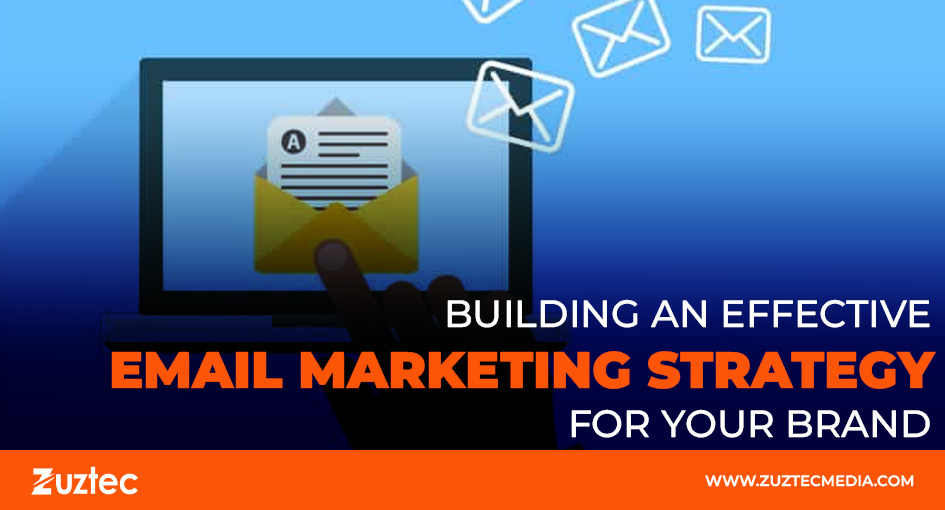
Building an Effective Email Marketing Strategy for Your Brand
Email remains one of the most powerful marketing tools for businesses of all sizes. It allows direct communication with your audience, personalized engagement, and measurable results—all at a relatively low cost. However, sending random emails to a list of contacts isn’t enough to see strong performance. To accomplish your objectives and stand out in crowded inboxes, you need a carefully considered email marketing strategy.
A good strategy involves more than just writing compelling copy or creating eye-catching designs. It includes audience segmentation, content planning, automation, and analysis. With proper planning, your email campaigns can drive traffic, boost conversions, and retain customers over the long term. Without structure, your emails risk being ignored or marked as spam.
You can run weekly newsletters, promotional offers, product updates, or customer loyalty sequences—all tailored to different segments of your audience. But for this to work effectively, you need to understand your customers’ behaviors, preferences, and needs.
This post will outline the procedures for developing a successful email marketing plan from the ground up. Whether you’re a startup looking to grow your audience or a seasoned marketer aiming to improve your results, the following tips will help you build a solid foundation and generate long-term success through email.
Define your goals and audience
Start by identifying the purpose of your email marketing efforts. Are you aiming to increase website traffic, promote new products, or improve customer retention? Your objectives will shape the type of emails you send and how you measure success.
Next, define your target audience. Understand who they are, what problems they face, and what kind of content they prefer. This information helps you create relevant, personalized emails that speak directly to your readers.
Build and segment your email list
A robust email marketing strategy requires a high-quality email list. Avoid buying lists, as they often include unengaged or irrelevant contacts. Instead, grow your list organically using signup forms, lead magnets, and gated content.
After you have a list, divide it up according to criteria such as engagement level, behavior, location, or past purchases. Sending more relevant and efficient messages to each group is made possible by segmentation.
Choose the right email types
There are many types of emails you can include in your strategy: welcome emails, newsletters, promotional offers, abandoned cart messages, and re-engagement campaigns.
For example, welcome emails help build a relationship with new subscribers, while newsletters keep your audience informed and engaged. Promotional emails drive sales, and re-engagement campaigns bring inactive users back.
Automate and personalize your emails
Automation can greatly improve efficiency while increasing the relevance of your emails. Set up automated workflows for actions like welcoming new subscribers, following up after purchases, or reminding users of abandoned carts.
Personalization also boosts engagement. Use subscriber data to address recipients by name, suggest products based on previous purchases, or adjust timing based on behavior. Personalized emails feel more human and are more likely to drive action.
Test and analyze your campaigns
Testing is crucial to optimizing your email marketing strategy. A/B testing lets you compare different subject lines, send times, layouts, or calls to action to see what works best.
Track key metrics like open rate, click-through rate, conversion rate, and unsubscribe rate. These figures assist you in determining what appeals to your audience and what needs to be improved.
By continually analyzing results, you can refine your strategy and boost your return on investment over time.
Maintain compliance and deliverability
Following email marketing laws and best practices ensures your emails reach the inbox and avoid legal trouble. Familiarize yourself with rules like GDPR and CAN-SPAM, and always include an easy unsubscribe option.
Use a reputable email service provider and clean your list regularly to remove inactive or invalid addresses. Also, avoid spammy words in your subject lines and use a verified domain for better sender reputation.
These practices improve your email deliverability and help maintain trust with your subscribers.
Review and adjust your strategy regularly
A good email strategy is not static. As your business evolves, so should your approach. Set regular times—monthly or quarterly—to review performance data and assess what’s working and what isn’t.
Be willing to experiment with new formats, update your automation flows, or rework your segmentation logic. Staying flexible and data-driven allows your strategy to grow with your audience and keeps your campaigns fresh.
Consequently, an effective email marketing strategy can transform how you connect with customers and grow your business. By setting clear goals, understanding your audience, and consistently delivering valuable content, you’ll see better engagement and more meaningful results.
Sending the right emails to the right people at the right time is more important than sending more. Your strategy can become one of your most effective marketing tools with careful planning, frequent testing, and astute automation and personalization.

